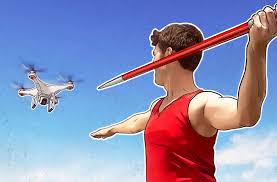Drone technology provides us with the possibility of changing the world-from the historical transition of e-commerce to faster emergency response. But this technology also has its dark side. It can be used to monitor, threaten critical infrastructure, or attack people and public places. "The Secretary of Homeland Security Coste Jan Nielsen wrote in the Washington Post.
The U.S. security department has issued a warning: The current law is not sufficient to deal with the threat of drones, and operators can use unmanned aircraft systems (UAS) to launch conventional attacks and cyber attacks. In June of this year, several officials of the Ministry of National Security testified before Congress: “This is a very serious and imminent threat. We are not yet ready to deal with it.” Because federal law predates the development of drone technology Promulgated, so the Ministry of National Security and the Ministry of Justice "have nothing to do with the issue of managing drones."
Dan Gedinger, deputy director of the Center for Unmanned Aerial Vehicle Research (CSD) at Bard College in the United States, pointed out that many anti-UAV systems, such as “jammers” designed to cut off the operator’s contact with the drone, are difficult to operate in non-combat areas Deployment because such technologies may interfere with commercial flights and law enforcement operations. "There are many challenges in deploying these measures domestically," Gedinger said. Analysis also pointed out that some UAVs are small in size and low in flight altitude, making it difficult for radar to detect and identify. In addition, as the popularity of drones continues to rise, it is difficult to distinguish criminals from large wholesale fans.

According to reports, the US Department of Security has called on Congress to amend relevant laws to give the US federal government more authority to respond to drone threats. Germany passed the "Regulations Regarding the Use of Unmanned Aerial Vehicles" last year, which imposed strict regulations on drone users. France also promulgated a decree on drone management for the first time in 2012, and then revised and supplemented relevant regulations to strictly regulate the use of drones. But Greenpeace said last month that it had manipulated a drone into a nuclear power plant in France to alert the public to potential safety hazards in nuclear power.
Although many companies are cooperating with government departments to formulate relevant regulations, can the relevant regulations take effect in a timely manner? Can different departments at all levels coordinate and manage the "black fly"? Are management tools and technologies sufficiently advanced?
Clark of the RAND Corporation pointed out that governments of all countries are striving to keep up with the rapid development of commercial drones, "the actual situation far exceeds the law, policy and authority." The Atlantic Monthly pointed out that the Venezuelan "assassin" showed that the speed of technological development has exceeded the government's ability to respond.
For this difficult situation brought about by drones, the problems caused by technology should also be solved by technology. As a leading company in the drone jammer industry, Kongyu Technology has been focusing on anti-UAV technology research for a long time, and has independently developed a mature "Falcon" anti-UAV system, which can monitor in real time, track continuously, and accurately dispose of UAVs provide solutions and customized low-altitude support services for government departments and some important institutions in various countries to respond to UAV attacks.
